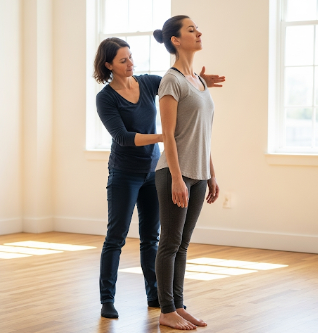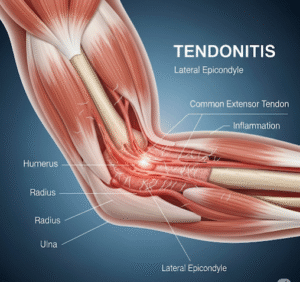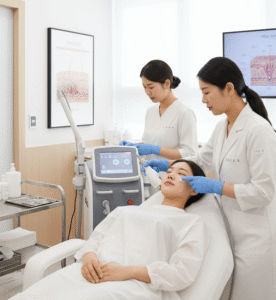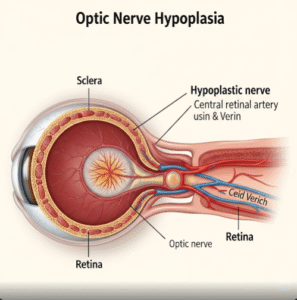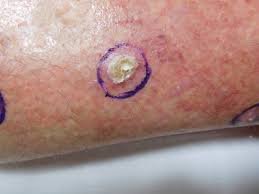What It Is
The Alexander Technique is an educational method that teaches people how to improve posture, movement, and overall body use to reduce unnecessary muscular tension. Unlike conventional medical treatments or physical therapies, it is not a treatment for a disease but rather a retraining of body awareness and movement habits.
The method was developed by Frederick Matthias Alexander in the late 19th century. Alexander was an Australian actor who struggled with chronic voice loss. Through self-observation, he discovered that poor posture, tension, and inefficient breathing patterns were the root cause of his problem. By consciously changing the way he moved and held his body, he was able to regain his voice. This approach became the foundation of what is now known as the Alexander Technique.
Today, the Alexander Technique is widely used by actors, musicians, dancers, athletes, and individuals seeking relief from chronic pain, stress, and postural problems. It is practiced in wellness centers, performance schools, rehabilitation clinics, and private studios worldwide, including in South Korea where holistic and integrative approaches to health are gaining popularity.
Why It’s Done
The Alexander Technique is pursued for a variety of health and performance reasons. Unlike surgery or medication, it is a learning process rather than a medical procedure.
Main purposes include:
- ➤ Posture improvement: Helps people correct slouching, forward head posture, and spinal misalignment.
- ➤ Pain relief: Particularly effective for chronic neck pain, back pain, and tension headaches.
- ➤ Enhanced performance: Used by singers, actors, dancers, and athletes to improve movement efficiency and prevent injuries.
- ➤ Breathing improvement: Supports better breath control for musicians and people with respiratory challenges.
- ➤ Stress reduction: Encourages mindful body awareness, reducing unnecessary muscular tension.
- ➤ Rehabilitation support: Complements physiotherapy and occupational therapy for people recovering from injury.
Benefits reported by individuals include:
- ✔️ Greater ease of movement.
- ✔️ Reduced muscle stiffness and fatigue.
- ✔️ Improved coordination and balance.
- ✔️ Increased confidence in posture and appearance.
- ✔️ Better mental clarity and relaxation.
Alternatives
While the Alexander Technique is unique, several alternative approaches can provide similar benefits. These may be chosen based on patient needs, accessibility, or personal preference.
Alternatives include:
- ➤ Physical therapy (Physiotherapy): Focuses on rehabilitation exercises and mobility improvement.
- ➤ Yoga: Emphasizes posture, flexibility, breath control, and relaxation.
- ➤ Pilates: Strengthens the core, improves body alignment, and enhances posture.
- ➤ Feldenkrais Method: Another somatic education approach that teaches awareness of movement patterns.
- ➤ Chiropractic care: Manual adjustments to correct spinal misalignments and posture.
- ➤ Mindfulness meditation: Reduces stress and improves awareness, though not movement-focused.
Key difference: Unlike these methods, the Alexander Technique is not an exercise program but a way of learning — it teaches people to re-educate their body and mind in daily activities like sitting, standing, and walking.
Preparation
Since the Alexander Technique is not a surgical or medical procedure, preparation is minimal, but a few steps can enhance the learning experience:
- ✅ Wear comfortable clothing – sessions may involve sitting, standing, or light movement.
- ✅ Be open to change – success depends on willingness to become more aware of habitual movements.
- ✅ Choose a qualified teacher – certified Alexander Technique practitioners are trained extensively.
- ✅ Set realistic goals – improvements take time and practice.
- ✅ Consistency – regular sessions (often weekly) provide the best results.
How It’s Done
The Alexander Technique is usually taught in one-on-one lessons with a certified teacher, though group classes also exist.
A typical session involves:
- Observation: The teacher watches how the student moves, sits, or stands, identifying patterns of tension.
- Guided movement: Gentle, hands-on guidance and verbal instructions are used to help the student release tension.
- Posture awareness: Students learn to lengthen the spine, balance the head, and coordinate movement.
- Breathing improvement: The method encourages natural, unforced breathing.
- Application to daily life: Teachers show how to apply the technique while sitting at a desk, playing an instrument, walking, or speaking.
Session details:
- Duration: 30–60 minutes.
- Frequency: 1–2 sessions per week initially.
- Course length: Many people take 20–30 sessions for significant changes, though benefits may appear sooner.
Recovery and Progress
There is no medical “recovery period,” but learning the Alexander Technique is an ongoing process. Students gradually integrate new movement patterns into daily life.
Expected progress includes:
- ✔️ Within a few sessions: noticeable relaxation and improved posture.
- ✔️ After 10–15 sessions: increased body awareness and reduced muscle tension.
- ✔️ Long-term (20–30+ sessions): permanent changes in posture, movement efficiency, and reduced pain.
Unlike surgery or medication, the Alexander Technique is side-effect free and relies entirely on the individual’s ability to learn and apply new habits.
Possible Complications
The Alexander Technique is extremely safe, but a few considerations should be kept in mind:
- ⚠️ Initial discomfort: Some students may feel mild muscle soreness as they adjust to new posture habits.
- ⚠️ Emotional release: Increased body awareness may bring up emotional tension in some individuals.
- ⚠️ Limited results without practice: Benefits diminish if the student does not apply lessons in daily activities.
- ⚠️ Not a substitute for medical treatment: It should not replace medical care for serious injuries or illnesses.
Overall, risks are minimal to none when taught by a certified instructor.
Treatment Options in Korea
South Korea is widely recognized for its holistic and integrative healthcare system, which combines modern medical practices with alternative approaches like acupuncture, yoga therapy, and the Alexander Technique.
Availability in Korea:
- 🏥 Wellness centers in Seoul and Busan offer Alexander Technique lessons.
- 🏥 Universities and arts academies – performance schools use it for singers, dancers, and actors.
- 🏥 Rehabilitation clinics – some physiotherapists incorporate Alexander principles into patient care.
- 🏥 Private studios – certified teachers provide one-on-one lessons for individuals seeking posture correction and pain relief.
Why Korea is an excellent choice for Alexander Technique:
- ➤ Increasing popularity of integrative medicine.
- ➤ English-speaking practitioners available in major cities.
- ➤ Affordable compared to Europe or the US.
- ➤ Convenient for medical tourists seeking both traditional treatment and alternative wellness practices.
Highlights
- ➤ The Alexander Technique is a posture and movement re-education method, not a medical procedure.
- ➤ Helps reduce chronic pain, improve posture, enhance breathing, and boost performance.
- ➤ Commonly used by performers, athletes, and individuals with musculoskeletal pain.
- ➤ Safe, non-invasive, and free from side effects.
- ➤ Sessions involve gentle touch, verbal guidance, and movement re-education.
- ➤ 20–30 sessions often lead to long-term improvements.
- ➤ In Korea, it is available in wellness centers, arts academies, and rehabilitation clinics.

